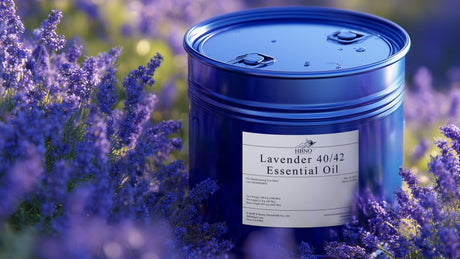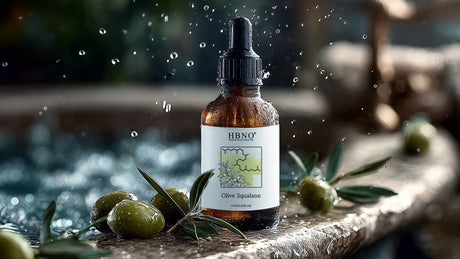In the ever-evolving world of natural ingredients, oleoresin stands out as a powerful and versatile extract derived directly from plants. With its rich aroma, deep color, and high concentration of essential compounds, it's become a preferred choice across food, fragrance, personal care and cosmetic, and wellness industries.
Oleoresin is not just a product-it's the complete essence of a plant, extracted in a way that captures both its volatile oils and non-volatile resins. From its potent applications in flavoring and fragrance to its value in cosmetic and industrial formulations, this natural extract delivers complexity, concentration, and consistency.
How Is Oleoresin Extracted?
Oleoresins are typically extracted using food-grade solvents or CO₂ methods. The process begins with selecting and drying the raw botanical material, which is then finely ground. A solvent is used to draw out both the essential oils and the resinous compounds from the plant. The solvent is then removed through evaporation, leaving behind the thick, viscous oleoresin.
Understanding how to extract rosemary essential oil properly is essential when aiming for a high-quality oleoresin product, especially since rosemary's aromatic and therapeutic components can be sensitive to heat. CO₂ extraction, in particular, is becoming increasingly popular due to its ability to preserve heat-sensitive compounds without leaving chemical residues. The result is a clean, concentrated extract that reflects the full profile of the original plant-aroma, taste, and natural coloring agents included.

Oleoresin Oil Uses
1. Flavoring and Food Applications
One of the most common oleoresin oil uses is as a flavoring agent in food production. Spice oleoresins such as paprika oleoresin, black pepper, turmeric, ginger, and capsicum oleoresin are widely used to impart strong, authentic flavors with minimal dosage. These concentrated extracts provide consistent flavor, making them a preferred choice in sauces, snacks, processed foods, and meat products.
In addition to food flavoring, many spice oleoresins provide natural coloring. For instance, paprika oleoresin is known for its rich red hue and is often used in cheese, marinades, and seasoning blends. Turmeric oleoresin, similarly, provides a golden-yellow color ideal for culinary use.
2. Fragrance and Perfumery
Oleoresins are also widely used in the fragrance industry. Vanilla oleoresin 20 fold, for example, offers a warm, rich aroma that works well in both perfumes and home fragrance products. Unlike some essential oils, oleoresins tend to have a deeper, longer-lasting scent, making them a great base or fixative in scent formulations.
Fragrance oleoresins like copaiba or myrrh are often used in scented candles and incense, and diffusers, adding an earthy or resinous tone to the blend. Because of their thickness, they may need to be diluted or combined with other carriers, but their scent payoff is significant.
3. Cosmetic and Personal Care Products
The cosmetic industry makes extensive use of oleoresin oils for both their aromatic and preservative properties. Rosemary oleoresin, for example, is often added to lotions, creams, and oil-based products to extend shelf life and add a refreshing herbal note. Its natural antioxidant content helps stabilize formulations containing oils or butters.
Oleoresins of basil, ginger, or turmeric may also be found in skincare formulations where botanical authenticity is valued. Their rich profiles and plant-based origins align well with clean beauty trends, supporting consumer demand for nature-based, synthetic-free ingredients.
4. Industrial Applications
Outside of food and personal care, oleoresins play a role in various industrial settings. They are used in natural varnishes, wood polishes, inks, and paints due to their resinous consistency and natural gloss. Copaiba oleoresin, for instance, has long been used in wood finishes and lacquers due to its clarity and hardness once cured.
They also serve as coloring agents in textiles and plastics. Because oleoresins are derived from natural sources, they offer a plant-based alternative to synthetic dyes and stabilizers.

Benefits of Oleoresin Oil
1. High Potency and Efficiency
One of the biggest benefits of oleoresin oil is its potency. A small amount delivers a high concentration of aroma, flavor, or color, making it a cost-effective option for manufacturers and formulators. Whether it's used in a sauce, lotion, or scent blend, you can achieve powerful results with minimal quantity.
2. Longer Shelf Life
Oleoresins are naturally more stable than essential oils because of their resin content. This means they oxidize more slowly and last longer when stored properly. This makes them ideal for products that need to maintain aroma or flavor over time, such as spice blends, infused oils, or packaged foods.
3. Full Spectrum Extraction
Another benefit is the full-spectrum nature of oleoresin oil. Unlike essential oils that only carry volatile aromatic compounds, oleoresins include non-volatile elements that contribute depth and authenticity. This results in a more complete sensory experience-whether that's in taste, aroma, or texture.
4. Versatility in Application
Oleoresins can be used across multiple industries, from food and cosmetics to fragrance and industrial manufacturing. Their adaptability allows formulators to meet a wide range of functional and aesthetic needs. Whether you're creating a natural product line or enhancing a commercial food item, oleoresins offer flexibility without compromising quality.
5. Clean Label Ingredient
As consumers increasingly look for natural, transparent ingredient lists, oleoresin oil fits well into clean label initiatives. Being plant-derived, minimally processed, and solvent-free (when CO₂-extracted), oleoresins are attractive to brands and buyers alike.

Popular Oleoresins and Their Applications
- Turmeric Oleoresin - Used for its warm yellow color and distinctive earthy flavor in culinary applications.
- Black Pepper Oleoresin - Provides a spicy, aromatic kick to sauces, seasonings, and marinades.
- Paprika Oleoresin - Adds vivid red coloring and mild sweetness to snack foods and cheese.
- Vanilla Oleoresin - Popular in perfumery, diffusers, and body products for its sweet, comforting aroma.
- Copaiba Oleoresin - Often used in incense and resin-based fragrance products.
- Rosemary Oleoresin - Common in skincare and haircare for its fresh herbal scent and antioxidant properties.
How to Use Oleoresin Oil
Oleoresins can be used directly or blended into products, depending on the application. In food manufacturing, they're typically diluted in edible carrier oils like vegetable oils or alcohol-based solutions. In cosmetics or perfumery, they may be infused into base oils or emulsions. Due to their thick consistency, oleoresins often require careful mixing to ensure even distribution.
For best results, it's important to follow recommended dilution rates and storage conditions. Oleoresins should be kept in airtight containers, away from heat and light, to preserve their aroma and color.
Conclusion
Oleoresin oil is a remarkable natural extract that captures the essence of plants in a concentrated, long-lasting form. Whether used for its flavor, fragrance, or color, it offers a clean, powerful alternative to synthetic additives in a variety of industries. With so many oleoresin oil uses and practical benefits of oleoresin oil, it's no wonder this ingredient is gaining widespread attention.
By tapping into the full spectrum of plant compounds, oleoresins offer a unique way to bring nature's richness into food, beauty, and lifestyle products-efficiently and authentically. HBNO Bulk Oleoresin Oil provides manufacturers and formulators with a trusted source for premium-quality extracts, making it easier than ever to harness nature's potency at scale.
Choose a Custom Private Label Service designed to meet unique branding and product needs.



